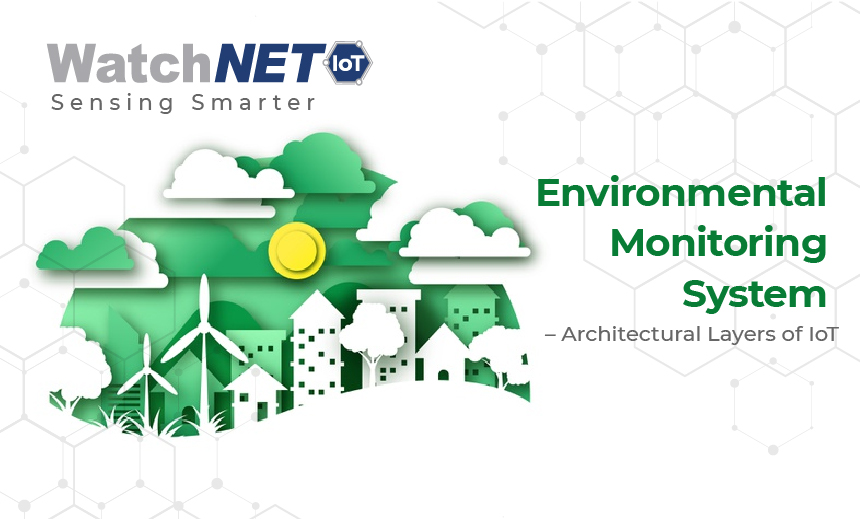
There has been a paradigm shift in the way the world is communicating, the way objects are connected and the process in which information is transmitted. Thanks to the Internet of Things (IoT), every corner of the globe is connected to every other corner. We are in an era of IoT and the trends and sensors developed are a class apart from anything we have seen so far. IoT automation has taken the world by surprise at the way the IoT trends and devices interact with teh physical environment. One such use of the Internet of Things is something which is much needed for a sustainable life – environmental monitoring. Environmental monitoring systems using IoT is very important for the protection of our environment.
Any IoT interface, even in an environmental monitoring system, follows a seven layer framework on which it works:
- Sensors – Sensors are the entry point into an IoT system. They act as the interface between the real and digital world and in the environmental monitoring system, the IoT devices help in collecting information about:
- Waste management – the load the trucks can carry, the routes the trucks are currently taking and the load the trucks are carrying now
- Vehicle tracking – Sensors to track the vehicle movement are used to feed data about the location of vehicle, speed of the vehicle, parking space availability and the route the vehicle is taking
- Air & water safety – Air and water samples are monitored to analyze the impurities
- Weather monitoring – IoT trends have improved to monitor the weather continuously to feed in details of current weather conditions and cloud movements
- Sensors to gateway – This layer transmits the information from the first layer, sensors, to the next level, gateway. This follows a protocol with rules, syntaxes and semantics.
- Gateways – Gateways are just transmitting devices to send the data collected to the back end, where the actual analysis of data takes place. This is the interface between the internet and the transmitting devices.
- Gateways to internet network – This layer is responsible to transmit the data to wide area and far off locations and the protocols used include wi-fi, satellite and cellular networks.
- Information processing – The main use of the IoT devices is not only the data collection, but the analysis of the huge amount fo data and using it in decision making. The raw data collected from the pervious layers is stored in the cloud and processed using advanced analytics and other processing systems to display value added information to the user:
- Waste management data analysis helps analyze the optimum usage of the trucks, the areas where the garbage has to be collected and the best route to the destination
- Available parking spaces highlighted in green lights, live tracking of the vehicle to track your/your package’s location, condition of the vehicles to protect the environment form harmful emissions and the optimum speed
- On site testing helps reduce pollution and also prevents contamination of water bodies and related disasters
- Valuable forecasts help prevent loss due to disasters and save human life, by taking necessary precautions
- Internet to user – The final layer, where the information is displayed to the user, is mainly comprised of the internet, ethernet and wi-fi.
Value added information – The information presented can be used to track the parameters and monitor or take action accordingly.
